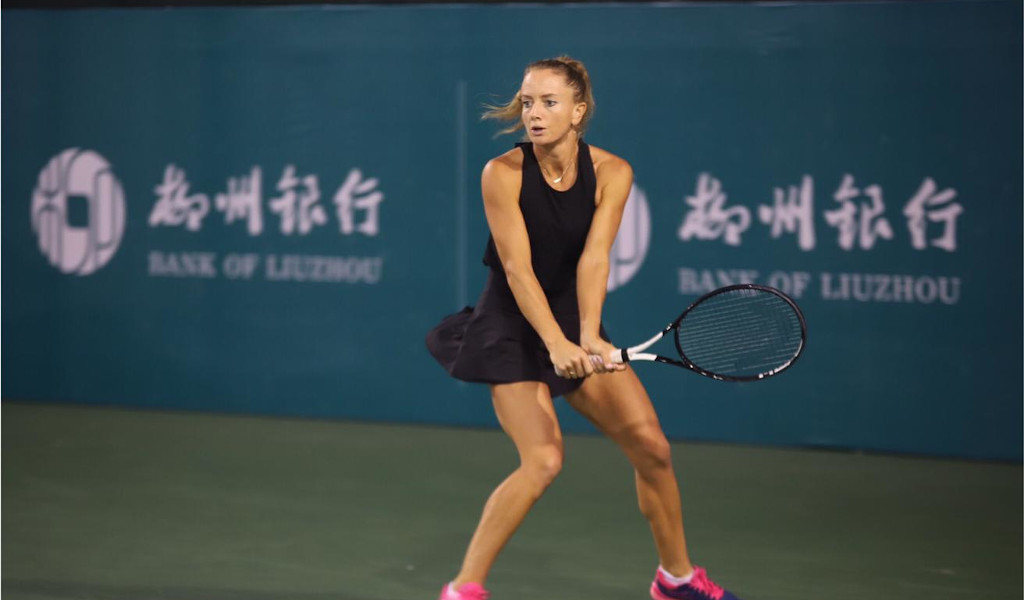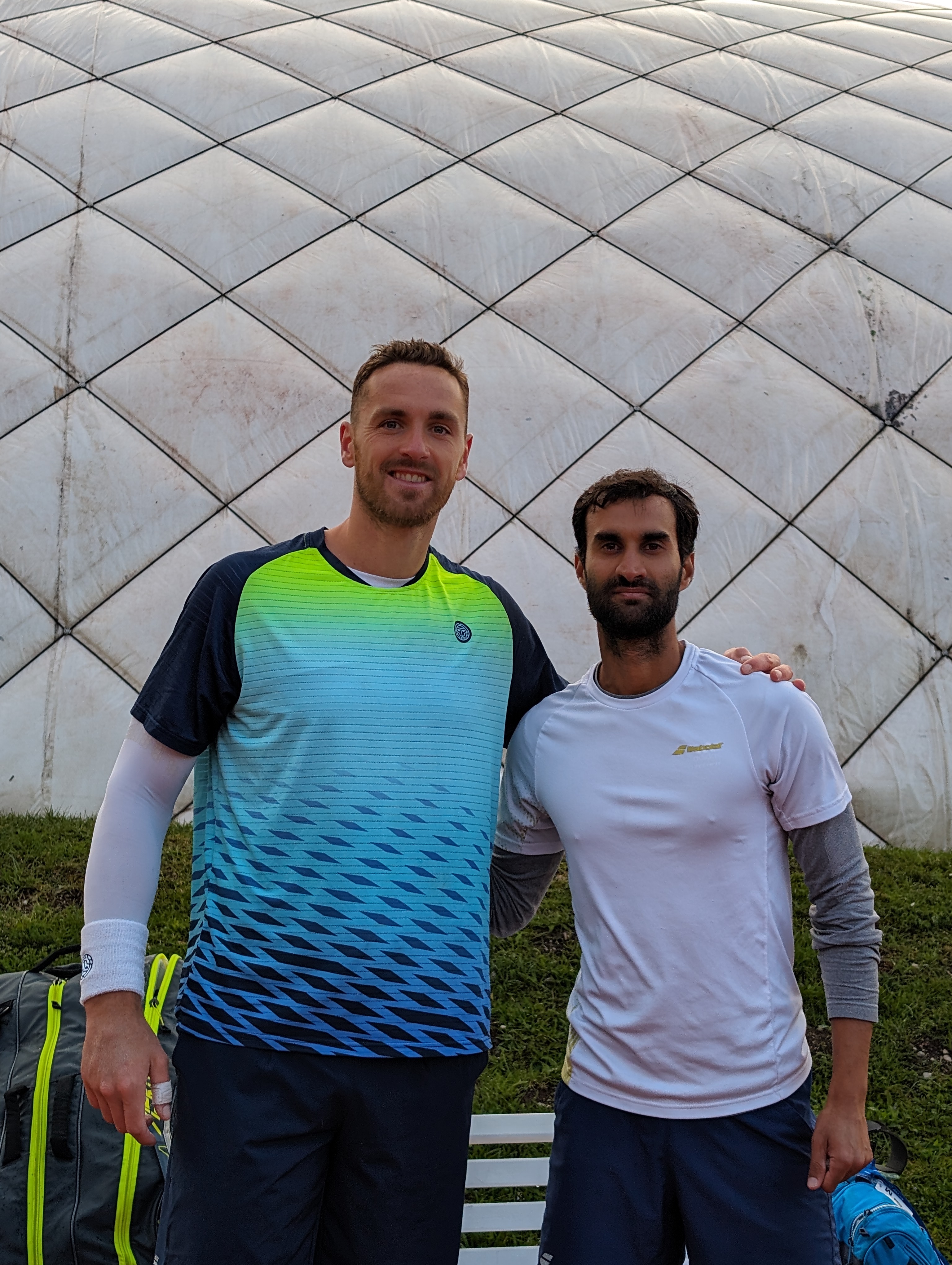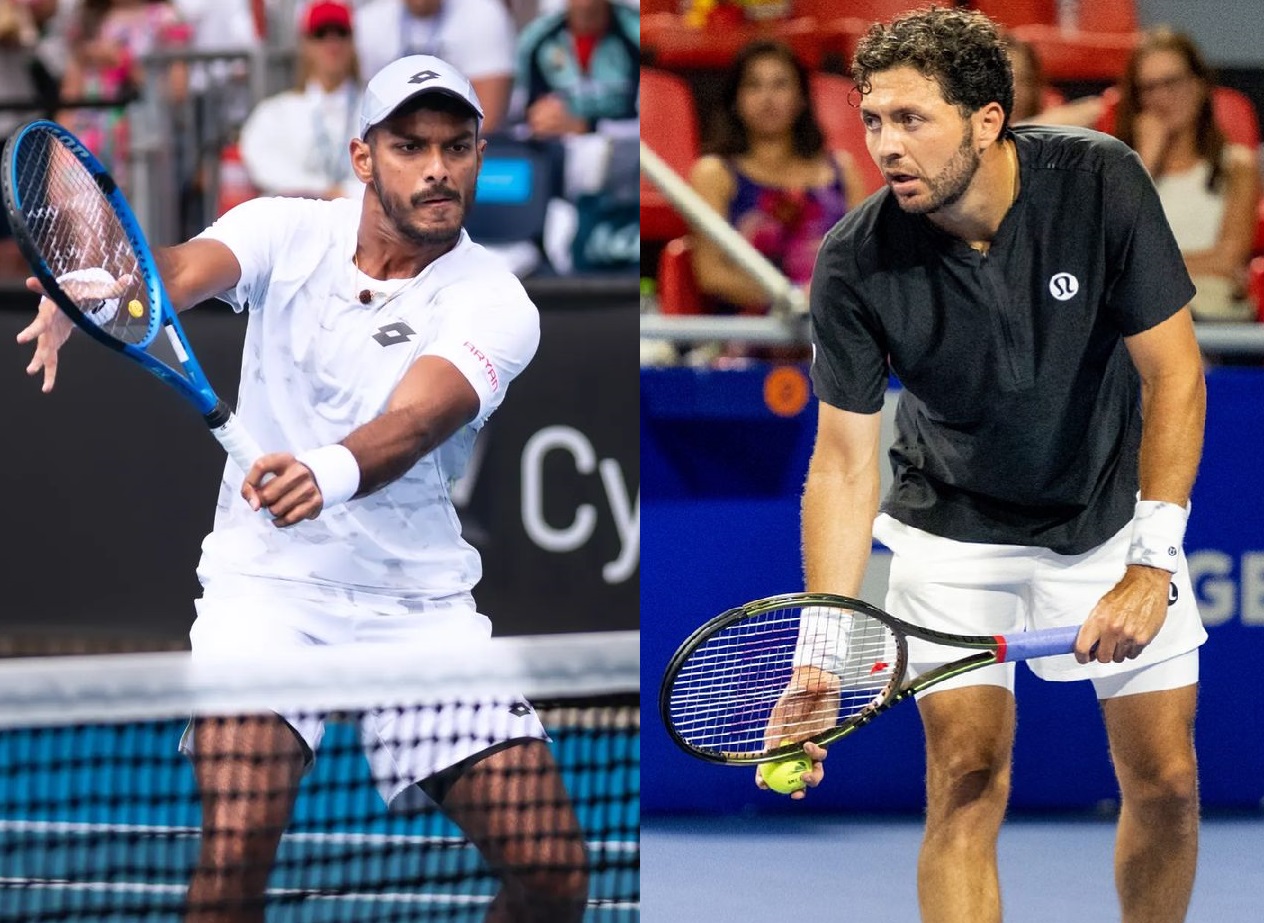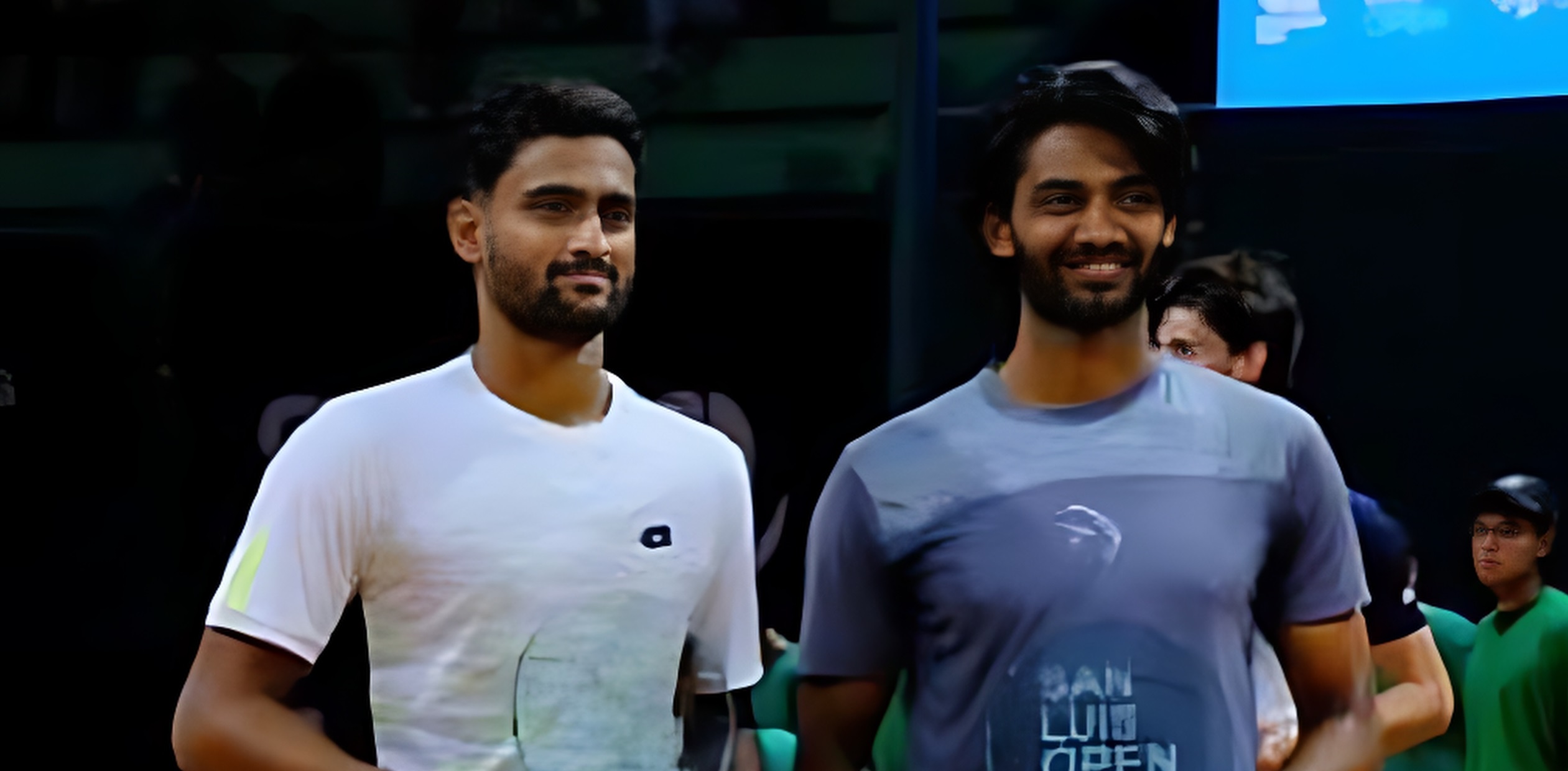Emily Webley-Smith is a familiar face in the Indian tennis circuit. Hailing from the United Kingdom, she has 4 ITF singles titles 26 doubles titles to her name. A frequent traveler to India, her love for the country is quite evident and her friendships on the Indian tennis circuit only cements her bonds with the country.
On the sidelines of ITF $25k event in Pune, Indian Tennis Daily caught up with her, where she shares her love for the country, her exhilarating experiences, her friendships with the Indian players and much more. She lifted the doubles $25k doubles title with Rutuja Bhosale.
(About the Author: Sanketa Anand – Director of a Tech firm in Singapore with a keen interest in Indian Tennis. Sanketa has been ITD’s face for Singapore / Maharashtra since inception
Note : This is a two-part interview. Stay tuned for more!)
Q) Another doubles title and single semis. It’s been quite an affair. It has been a great week for you..
Emily: I surprised myself a little bit. I haven’t played these many singles matches in a week for a long time. But I knew when I saw the tournament on the schedule that I really wanted to come to India and it was really complicated to get here, with the amount of papers and everything needed and the short amount of time that we had to organize things. But as soon as I landed I felt very comfortable and it felt like coming home. From a doubles point of view, I’m happy to be in the finals with Rutuja and the chance to play for another title.

Emily lifting the ITF $25 Pune partnering Rutuja Bhosale
Q) You have been to India (many years and you have traveled a lot. You know the Indian tennis community so well. How has been the affair with India?
Emily: I think the very first time you come, especially from England, it’s a big shock with the noise, the culture, the food and the colour. But I loved it immediately. I have always been made to feel welcome by all the people here running the tournament and also by the girls themselves. We share the same sense of humor, same work ethic and I think that they love that I also love being here. I’m never going to be someone that’s going to shy away from eating local food or living in a more Indian way when I’m here. The country itself, you get this onslaught of your senses – of the colour and the excitement. You never feel lonely in India, because there’s always something happening, there’s always someone awake. I like that as well. I think part of it is also the weather. I’m a sunshine girl. It makes me feel a lot better, in my body as well as I got older. I hate the cold and I hate the winter at home. It was just great to come from -2 [degrees] to 37[degrees] the blink of a long-haul flight.
Q) You played your first pro tour tournament here in India in Aug 2004. Any memories from when you were 16 or 17 years old?
Emily: I remember Delhi. I remember getting lost on the way to the hotel with the taxi driver. I remember being slightly bewildered but enjoying the adventure. I just remember the heat actually. A lot of girls were not very well, against me in the matches. But I seemed to be okay. No one could really work it out. There was this random blondie European who was dealing okay with the heat. But Delhi[courts] also used to be a little faster than it is now, because they resurfaced the courts, I think for the Commonwealth games. So, the combination of the heat and the faster courts has always suited me. I was always encouraged by my coaches to go out there and experience and to really tough out some difficult situations on my own and also to learn and to enjoy the adventure while I was there.
I tried to [go around the places]. If I have a day off, I love to see things. Obviously, now with the coronavirus it’s more difficult. In recent years, I have had more time to enjoy and see my friends. I have made such good friends here. If I do have time, I go to Bangalore, go to Mumbai and see my friends there. I think gradually, through the years, those players change cities, go to university. But there’s always someone in India that I would love to hang out with, have a chai with and have a nice. I love masala chai, but I love this one from the street that is really bad for you, it comes in shot glasses, which is just half sugar. But I have to be disciplined with this.
Q) After that you didn’t come to India until late 2008. It was a long pause and a long break. Was it intentional?
Emily: I was at my highest ranking in 2004 in singles, around 240. So, I was probably playing higher events during that time. I was also injured and had my second ankle surgery. So, I would have missed some time, coming back from that and I was based in the UK at the time. Probably, more of a scheduling decision and availability of tournaments.
Q) Your first Indian doubles partner Parul Goswami. You played with her in Romania. Do you remember her?
Emily: [Laughs] All I remember of Romania is being beaten by red clay a lot by people who were better clay courters than me.
Q) If you can still recall it, how did that partnership come about?
Emily: I don’t know. I’m not sure. I actually can’t remember that. I do know that I went to Romania to learn how to play on clay and I got a lot of lessons from the Eastern Europeans. And I felt quite uncomfortable for the full week. That’s all I remember about it, other than it being quite a tough trip in not winning many matches.
Q) Your first title with an Indian partner was a $15k title in Lucknow with Ankita Raina. I hope you remember that. How did that specific partnership come about?
Emily: I definitely remember that one. Anki was one of the few Indians, at the time that started to travel a bit more. She played in Asia, a little bit like me- in China, Japan. She was always on her own and I was always on my own. So we became friends. I loved her work ethic as well. Lucknow was on grass, which is my favourite. I wish we would have more tournaments on grass. And it was just a great week. It was really fun, the courts were beautiful. With a little bit more grass-court experience than most people had, growing up in the UK, I loved it.
Q) You have played doubles with Ankita in 20 events after that, back-to-back. It’s been a long affair. How did this friendship blossom?
Emily: Hemanth[Bendrey] sir actually invited me to help Ankita out and to allow me the opportunity to coach her, travel with her, which at the time when I was struggling financially helped me to be able play, because it was very expensive travelling to play. I think he also wanted Ankita to learn from some of the experiences that I had on the doubles court at that time. I was around 110-120 [at the time]. One of my favourite memories with Anki was in China. We played in a $80k event in Zhuhai. We had a couple of good wins in the first two rounds, a very good win in the semis and in the final, we walked out to a full centre court of Chinese crowd, against two Chinese girls. We were both there with no coaches and I was coaching her. If we double faulted or made a made, full round of applause from the whole crowd. Very partisan crowd. It felt like we were playing Fed Cup against China. It was just me and Anki- 5‘5”, 5’6” against these Chinese girls, just fighting. We played pretty well. We won the final that day. It was a really good result for us, but it was a surprise. We had played really well together, but we hadn’t done well in some of the bigger challengers yet. So, it was really nice to win that one.
Q) Moments like that brings you closer and go for many more events..
Emily: Yeah, the good moments, but also the tough moments. Sometimes, when you are in the middle of nowhere in China, it’s just lovely to have someone to laugh with or to have dinner with. Someone also who understands the fight and the battle when we put ourselves on the line everyday. Sometimes, it’s not easy to cope with. As you get older, you can adjust better. But, losing still hurts and it’s nice to have some company on tour when that happens.
Q) Can you share with us some of the most interesting experiences in India on the court and off the court?
Emily: From matches point of view, I remember a second-round match in Mumbai at the CCI club there and I was playing against Patricia Mayr. Patricia was close to a 100 [WTA ranking] in singles. We were on the last court, hardly anyone watching. It was one of my greatest singles wins, which no one else will remember because it was in a small tournament on court 93. But for me, I stayed extremely tough and wore her down physically. She was an Austrian and she was in an unbelievable shape and she was trying to make the main draw of the Australian Open – which was why she was still competing at the end of the year. I felt like, it was my moment and I worked out the way to play her exactly. When I won that match, it was a big moment for me, because I knew that my performance, all the training I had done and all the physical work I had done had gone into having one of my best singles win on a hardcourt.
On a lighter note, there was a monkey on court in Muzaffarnagar and we had to play let because of this monkey. Fun things- I was a part of Champions Tennis League (CTL). I was a reserve for one of the teams [ V Chennai Warriors] and we saw a tiger in the wilds, which was incredible. We went on safari-it was so cool! It was an incredible moment, I will remember that forever. It was majestic- as the tiger came into a watering hole close to it. It was just breathtaking. Actually, I couldn’t speak for a few moments, because it was one of those things when you are little, you don’t really envisage it and then we were there and it was amazing. Also, to be a part of Robin [Uthappa] & Shheethal’s [Shheethal Robin Uthappa] wedding. I was a bridesmaid for them. I was happy to be a part of such an incredible celebration- wearing a saree, all of the traditional Indian things which were great fun. The way that they celebrate life here – it was just fun to be a part of that.
Q) You have traveled and played in a lot of cities in India. You have played in Muzaffarnagar, Mumbai, Bangalore, etc. Which place did you like the most and which place did you have the most difficulty adjusting?
Emily: I like Bangalore the most and in Bangalore, I have the most problems adjusting in terms of the conditions- like the altitude, because I feel quite uncomfortable there. But as a city, I do like Bangalore the most. There is a lot of greenery and Coorg is beautiful, where we visited a few hours from there. I do love the energy of Mumbai for a short time. Then, it’s nice to get out and get to Bangalore when I can.
Q) Any specific experiences you had with Indian cuisines?
Emily: I love all of it. There’s not many things I don’t like. I actually really enjoy vegetarian food here. I’m non-vegetarian and I do eat quite a lot of meat and fish at home. But I enjoy vegetarian food here, because it tastes so good. A little more tricky in and around the matches, because we are not really used to certain things. At lunch time, I would eat a lot plainer than I would, if I wasn’t having a match. But the thing I miss the most is the dosa. I just love dosa so much. Literally when I came here, in the first three days I was smashing dosa before the matches. And once the matches began, I went back to omelletes and everything I should be eating. In London, it’s really hard to find dosa. There’s literally just one place that I found. And in Bristol where I live, there’s no dosa. So I’m always on the hunt to try and find it.
Q) You have seen the world tennis and Indian tennis very closely for many years. From your point of view, what are some of the areas that are working well and areas where we need to do a lot more to improve our stature in tennis?
Emily: I think, overall the standard in world tennis has improved, with strength and depth all the way down. I have noticed, even in the last years, it has gotten a lot harder at the beginning to make it and to move up the ranking. I would say that the opportunities with the tournaments, for the girls especially – there are even fewer now. I think they need more opportunities to play and they need more exposure to International players, like understand their level from a young age. I think Anki [Ankita Raina] was one of the few prepared to really go out and travel and actually lose a lot at the beginning. And I think, sometimes we are afraid of losing. In India, you have a press very similar to ours, that’s very supportive when they do well, but when they have a tough few months, they are very tough on the players. I think it’s really important with how tough tennis is. I do believe that tennis is the hardest sport in the world, with the traveling schedule and the difference in conditions that we have. The girls should feel supported and that they have a positive feel about playing in India and also backing behind them- that might not be financial. It’s very hard to find financial backing. We all struggle, even up to higher ranking. It’s very very difficult with money. But I think you actually do have great conditions here to make tennis players. And with some new academies like Bop’s [Rohan Bopanna’s] academy down in Bangalore and some things popping up, I think hopefully the coaches will understand the work ethic, the discipline, the desire, and the attitude will come. But it needs to be there from a young age and the quality of the practice, the quality of the recovery, the quality of the physical training. All of those things are catching up actually, but they still have a little way to go.
(Stay tuned for Part 2 to know more about Emily’s journey)










Leave a Reply